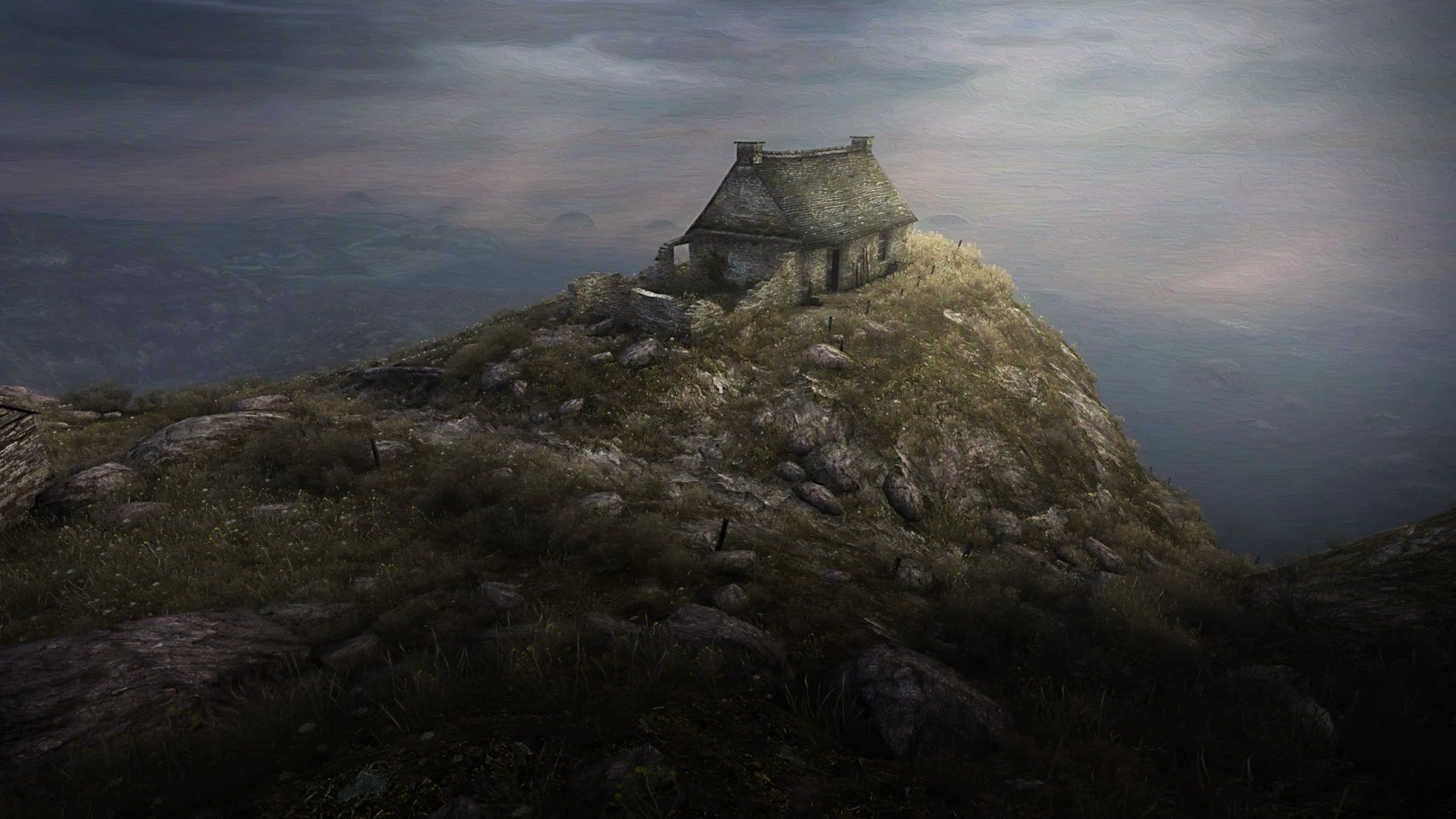Dear Esther, created by The Chinese Room and published by Curve Digital, is a narrative-driven exploration game that has helped define the “walking simulator” genre. Released in 2012 for Windows and Mac, with later ports to PlayStation 4 and Xbox One, the game is designed for a single player, generally of high school age and up due to its mature themes and complex narrative.
At its core, the game’s central dynamic revolves around the player embodying an unnamed protagonist as they wander a desolate Hebridean island, piecing together a tragic tale through cryptic monologues. As the journey unfolds, it becomes clear that this physical journey mirrors the protagonist’s psychological journey as they grapple with guilt, loss, and the search for redemption.
In Dear Esther, the slow walking mechanic serves as the primary means of environmental exploration and pushes the story forward, creating a dynamic where the player is forced to be immersed in the game’s rich symbolism and metaphorical landscapes. This in turn evokes a deep sense of emotional engagement and introspection that aligns with the protagonist’s psychological journey. For example, when I was playing the game, the slow, almost contemplative pace of walking supported the dynamics of exploration, revelation, and introspection. The game deliberately leaves out more “exciting” mechanics such as running and climbing in favor of a measured, meditative walk. This forced me to slow down and immerse myself in the hauntingly beautiful environments, which are crucial to the game’s storytelling.
As the player walks, the island itself seems to come alive with meaning. As shown in the image above, the player descends into a dark cavern glittering with phosphorescent fungi. The narrator then says: “The caves beneath the island are carved from old, compacted bodies — the wriggling, the scurrying, the flocking together in the darkness.” This vivid, unsettling image mirrors the protagonist’s descent into the dark recesses of their own psyche. Therefore, by forcing the player to walk, Dear Esther is able to impress upon them the importance of each location and build up an in-depth story.
Similarly, the player’s ascent to the radio tower at the game’s climax carries deep symbolic weight. As the player nears the tower, fragments of paper carrying cryptic dialogue swirls in the wind. One reads, “The gulls circle over the place where my letters have fallen into the sea,” suggesting a cathartic unburdening as the protagonist releases his painful memories to the elements. Without the slow walking pace, players would be unable to notice and contemplate these subtle visual details, thereby cutting off their emotional engagement with the story.
The act of walking also serves as a means of spatial storytelling, connecting disparate narrative fragments as the player moves through the environment. Each new area triggers a monologue that gradually reveals more of the underlying story, which in turn creates a sense of discovery and revelation. The player isn’t just an observer but an active participant in disentangling the protagonist’s psychological journey. For instance, when I was playing the game, I felt like I was walking through the protagonist’s memories rather than just beautiful landscapes and piecing together his story with every step.
However, despite its powerful storytelling, Dear Esther has some limitations. One potential issue is that the game’s linear structure and lack of interactivity can sometimes lead to a sense of disengagement or passivity in players. Although the slow walking pace encourages contemplation, some players may feel that their actions have little impact on the unfolding story, resulting in a decreased sense of agency.
To address this issue while still maintaining the game’s atmospheric storytelling, Dear Esther could introduce a mechanic that allows players to make meaningful choices that influence the narrative’s interpretation or reveal different facets of the protagonist’s backstory. One way to achieve this is by implementing a system of branching paths or optional detours that players can choose to explore. For example, at certain points in the game, players could be presented with a literal fork in the path or a hidden trail leading off the main route. By choosing to follow these alternate paths, players could discover additional monologues, visual cues, or symbolic objects that shed light on the protagonist’s history or state of mind.



